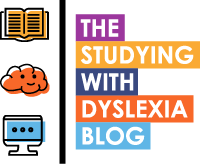We are getting close to SAT’s season and our year 6 students will be anticipating their tests. With 10% of our population being dyslexic, it is a pretty sure bet that many of our students will be feeling levels of anxiety and fear as to what the SAT’s will reveal. This article will explore what can be done to support younger dyslexic learners at this stressful time.
It seems amazing that in this day and age when in the main, strengths and skills associated with creativity , problem solving, big picture thinking and being entrepreneurial are highly prized in industry, our education system continues to judge a child based on their literacy and maths abilities. For a dyslexic child, who, with the right levels of nurture,is highly likely to have the potential for those skills that are prized, are in reality being set up to fail a test that is really only indicative but can have a huge emotional impact on a child before they enter into secondary education.
In her article in The Independent about SATs, specialist dyslexia tutor Debbie Abraham, talks about working with dyslexic students who can produce the most amazingly creative stories that she has ever read but somehow that is not deemed important as knowing what a subordinate clause is!
She goes on to talk about how her students who are just 11 years old are taking exams that they feel will label them as stupid before they have even left primary education.
So on the one hand the education system is judging an 11 year old on their maths and English capabilities and on the other our young dyslexic learners are feeling fearful about the outcomes of those tests and those feelings will be linked with those common challenges with self-esteem and confidence.
In a busy classroom our teachers need to balance the mental well-being of our young learners against getting good academic performance.
So what can a teacher to do support dyslexic learners when they take their SATs?
I believe that the following tips can help.
Increase opportunities for understanding and listening.
Yesterday I was talking with a dyslexia specialist who works for Leicestershire Local Authority and we were discussing the behaviour of children in schools and how, quite simply, a child doesn’t behave badly or not engage in school for no reason.
As we get closer to our children taking their SATs their levels of anxiety are going to increase. That won’t be a surprise, but I wonder if we have a mindset in education whereby we know what is happening and we seek to manage behaviour rather than get to the root causation of that behaviour.
I know that some teachers will have pupils who will be struggling to focus on reading and as such might be chatty, or be day dreaming or distracted from reading tasks because of challenges with dyslexia but in many cases I personally do not feel that this is being investigated systemically as the sheer numbers of children in this position will be high and as such will require support which may be beyond the the current available resources in the school.
Nonetheless, it can be really useful in terms of encouraging a child if a teacher allows them to explain what is troubling the them rather than focus on the behaviour. That very act of being willing to listen rather than controlling behaviour could build engagement in the class and a feeling of motivation as they get closer to their SATs.
It is by making time to listen that teachers can start to understand the challenges that a child is facing and put measures in place to support the child as they get closer to doing those tests.
Harness technology to support weak literacy skills.
I want to show you a video that speaks volumes about how technology can help a child to not only access the written word more effectively but also has a huge positive effect on confidence and engagement. With the SATs exams there are always going to be issues with nerves and self-doubt but if a child feels that the playing field is being levelled then they will be empowered to be the best that they can be. This video will show that it doesn’t take much to trigger the natural desire of a child to learn and engage in school.
Make schools more dyslexia friendly.
I have made comments about this before on this blog and I wholeheartedly agree with the British Dyslexia Association and other leading dyslexia charities who advocate for more dyslexia friendly schools.
If all our primary and secondary schools were able to adopt dyslexia friendly good practices across our education system, then I believe that everyone will benefit dyslexic or not. The key point being that if this practice was part of our education system’s ‘DNA’ then we are more likely to reduce anxiety for young learners and very possible raise attainment.
I recommend the British Dyslexia Association’s publication, The Dyslexia Friendly Schools Good Practice Guide which is available on the BDA website.
Did you like the video?
If you were intrigued by the difference that the technology made in the video then why don’t you try the technology for free.
Click the banner below to set that up.




